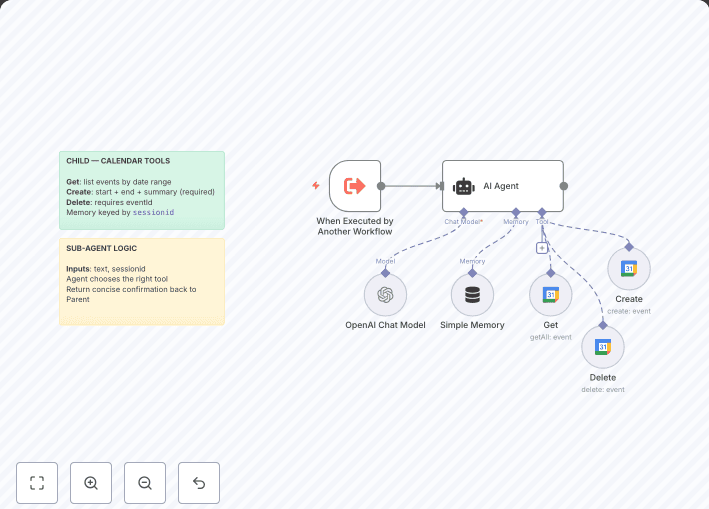Enterprise Knowledge Search with GPT-4 Turbo, Google Drive & Academic APIs
This workflow provides an enterprise-grade RAG (Retrieval-Augmented Generation) system that intelligently searches multiple sources and generates AI-powered responses using GPT-4 Turbo.
How it works
This workflow provides an enterprise-grade RAG (Retrieval-Augmented Generation) system that intelligently searches multiple sources and generates AI-powered responses using GPT-4 Turbo.
Key Steps
- Form Input - Collects user queries with customizable search scope, response style, and language preferences
- Intelligent Search - Routes queries to appropriate sources (web, academic papers, news, internal documents)
- Data Aggregation - Unifies and processes information from multiple sources with quality scoring
- AI Processing - Uses GPT-4 Turbo to generate context-aware, source-grounded responses
- Response Enhancement - Formats outputs in various styles (comprehensive, concise, technical, etc.)
- Multi-Channel Delivery - Delivers results via webhook, email, Slack, and optional PDF generation
Data Sources & AI Models
Search Sources
- Web Search : Google, Bing, DuckDuckGo integration
- Academic Papers : arXiv, PubMed, Google Scholar via Crossref API
- News Articles : News API, RSS feeds, real-time news
- Technical Documentation : GitHub, Stack Overflow, documentation sites
- Internal Knowledge : Google Drive, Confluence, Notion integration
AI Models
- GPT-4 Turbo : Primary language model for response generation
- Embedding Models : For semantic search and similarity matching
- Custom Prompts : Specialized prompts for different response styles
Set up steps
Setup time: 15-20 minutes
- Configure API credentials - Set up OpenAI API, News API, Google Drive, and other service credentials
- Set up search sources - Configure academic databases, news APIs, and internal knowledge sources
- Connect analytics - Link Google Sheets for usage tracking and performance monitoring
- Configure notifications - Set up Slack channels and email templates for automated alerts
- Test the workflow - Run sample queries to verify all components are working correctly
Keep detailed configuration notes in sticky notes inside your workflow


